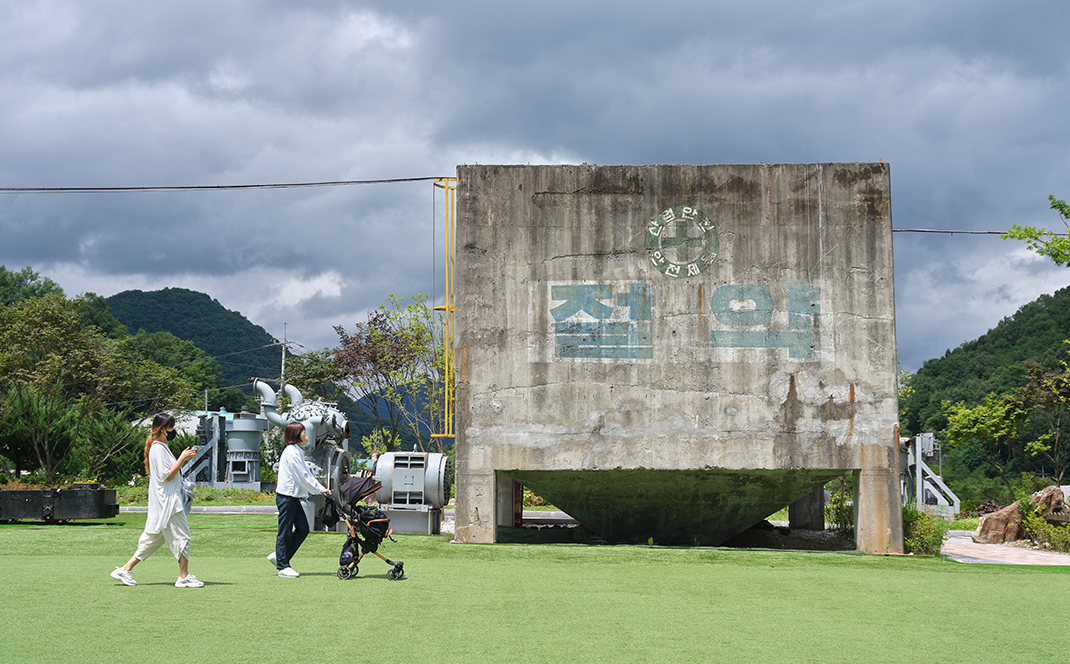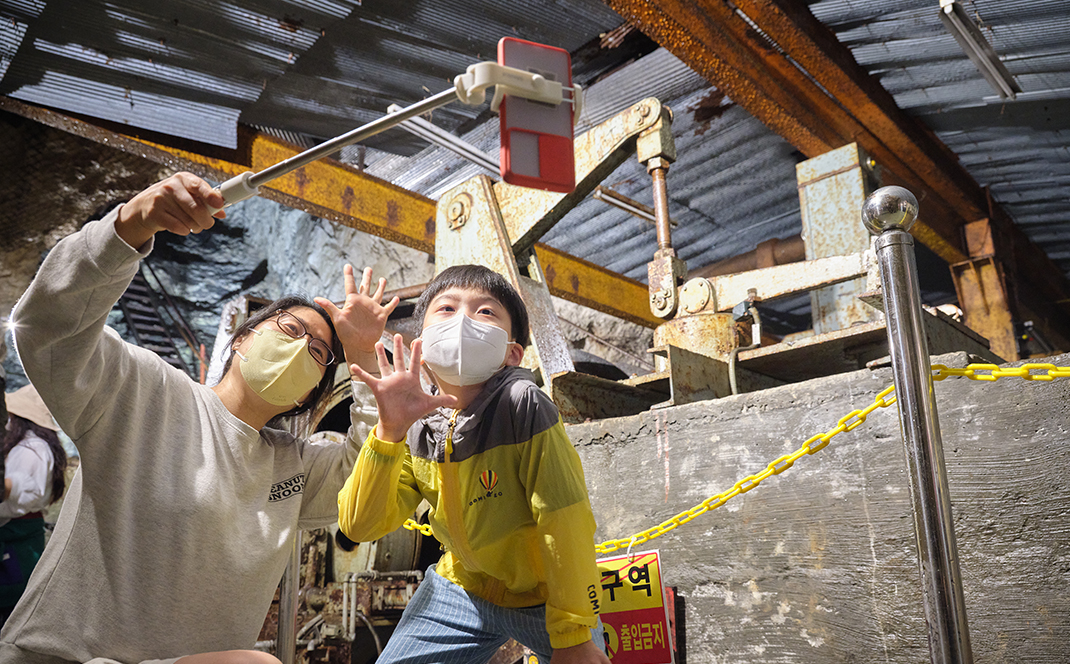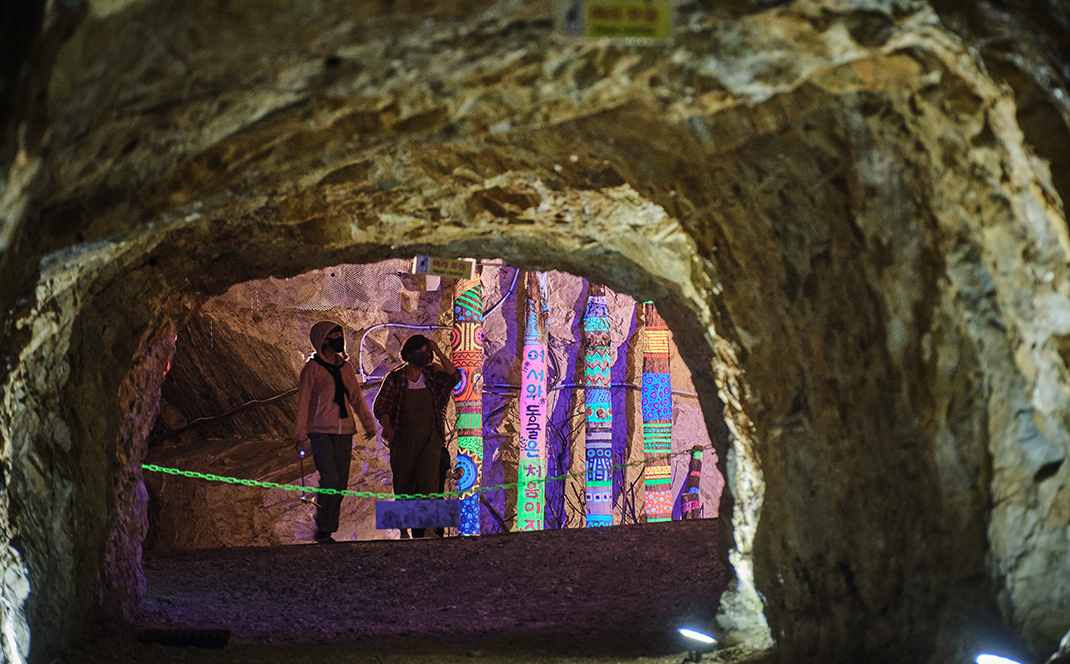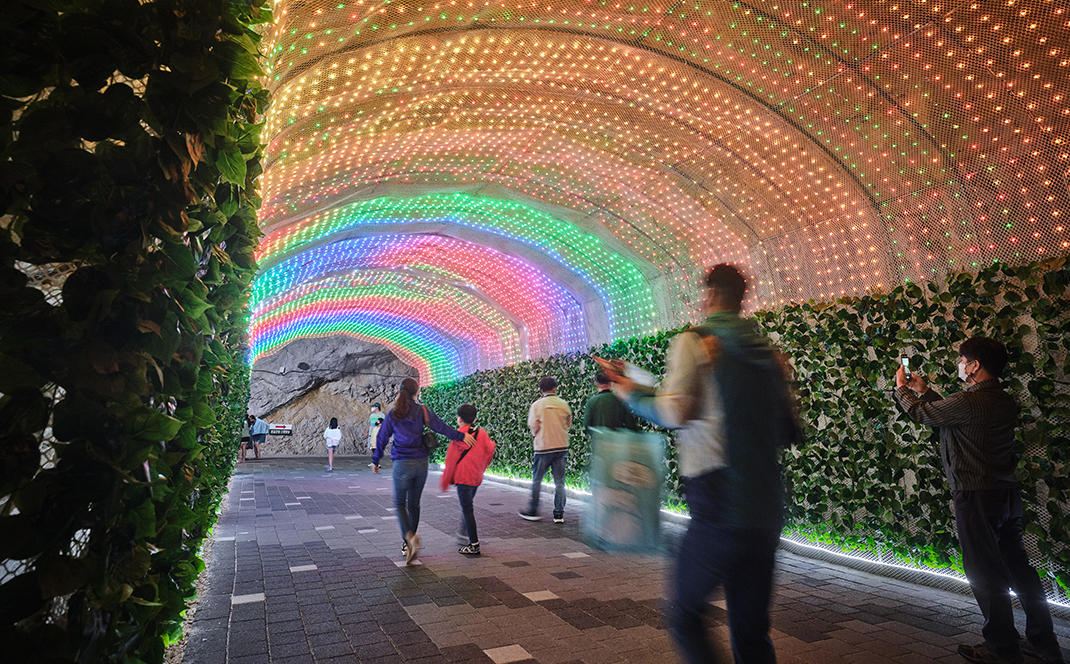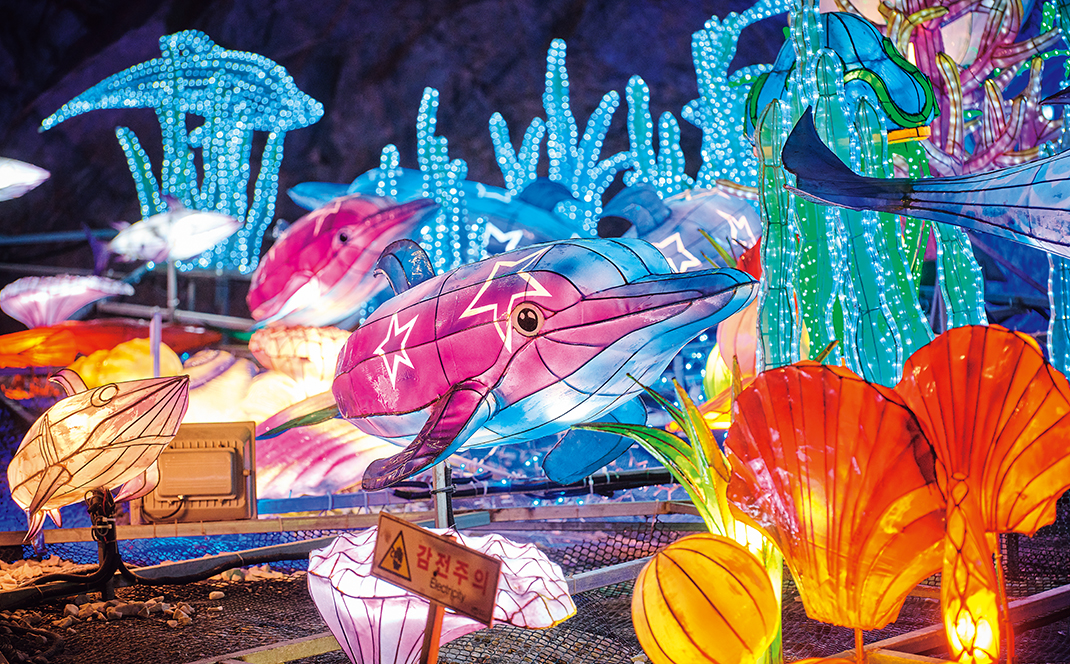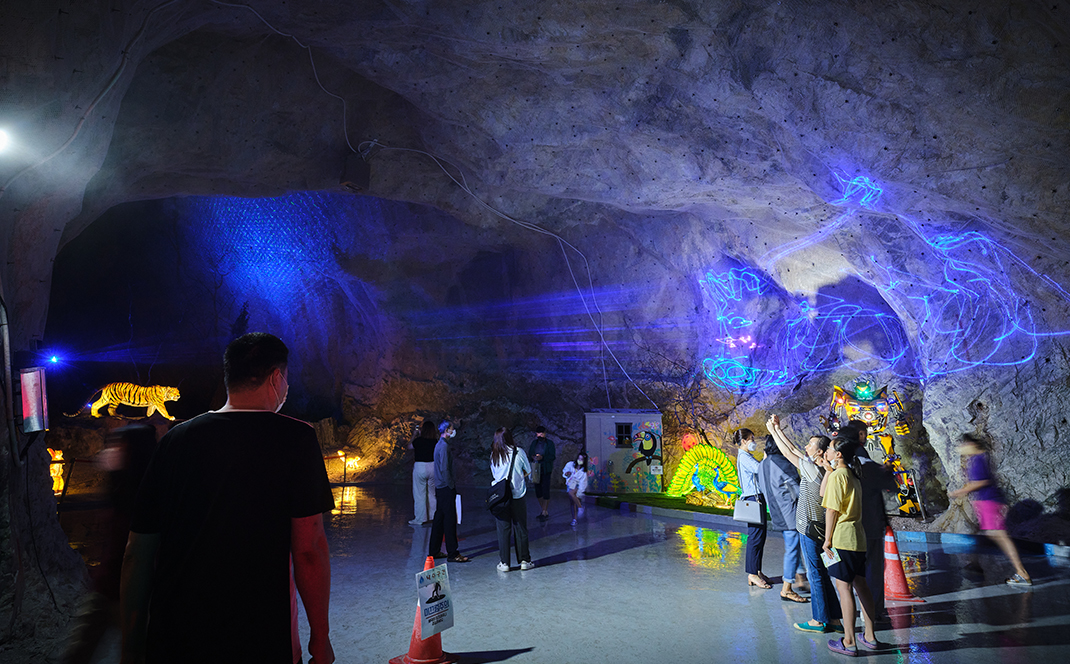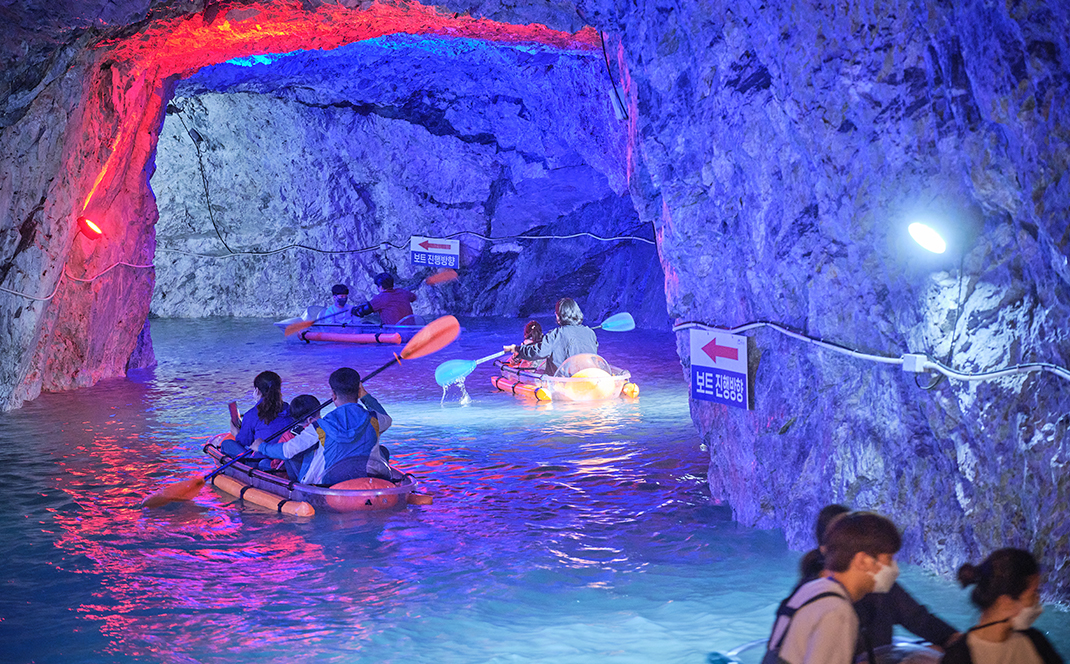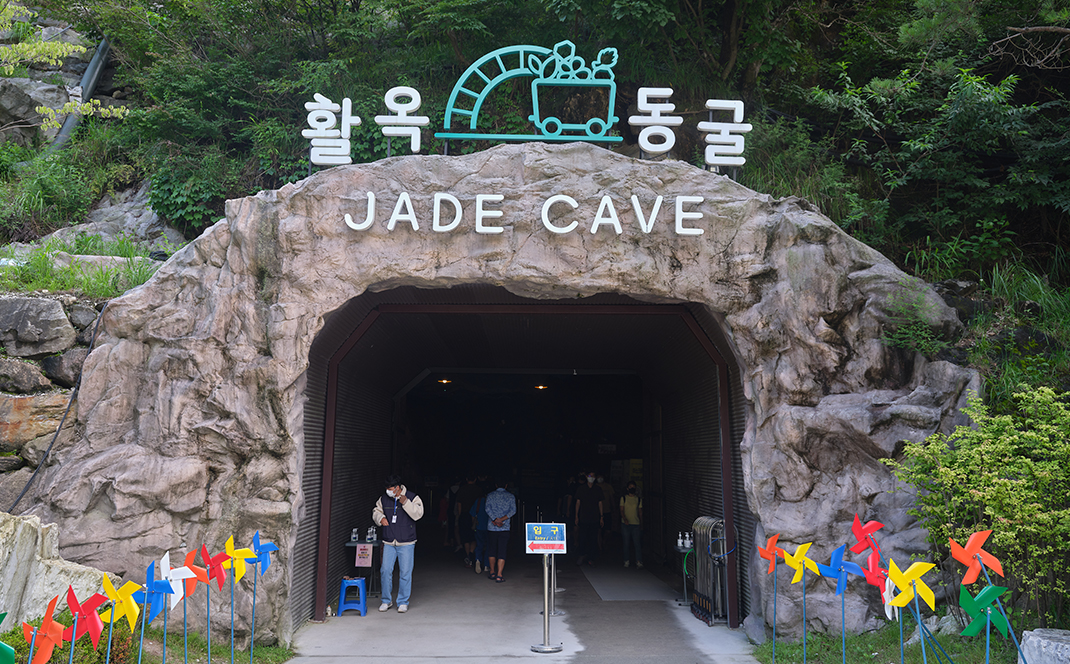Man-made Caves
Find New Life
After Nearly Disappearing,
Dongyang Mine Becomes a Hot Place
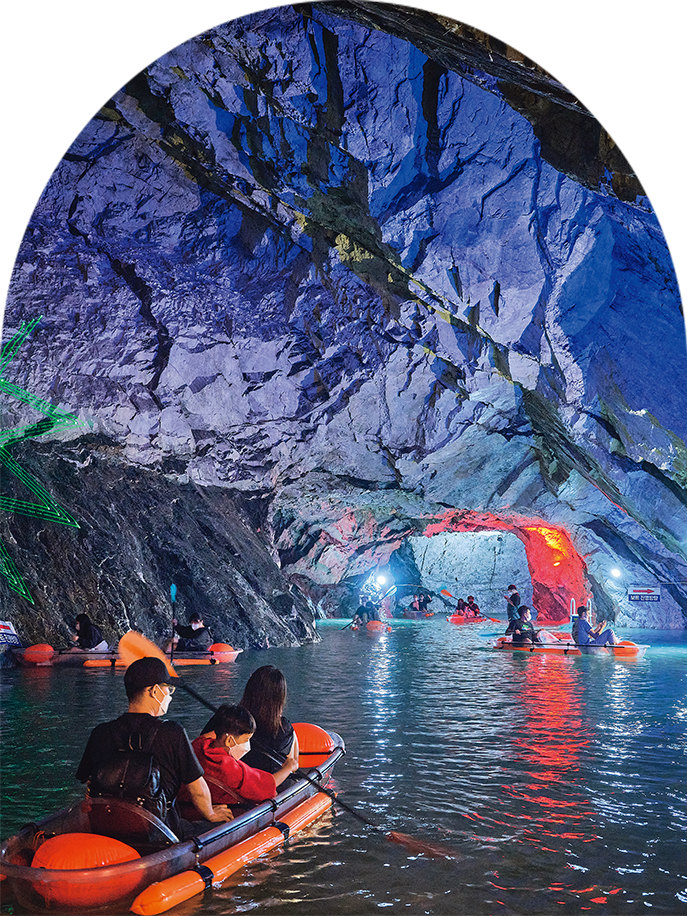
WRITTEN BY
Seong Hye-kyeong
Photographed by
Studio Kenn
Dongyang Mine in Chungju City once the employed more than 8,000 miners. It was the only white jade, talc, and dolomite mine in South Korea. However, Dongyang Mine eventually closed when it could not compete with imports of cheap Chinese talc. After the mine was abandoned, the only thing that remained was an artificial cave, a legacy of decades of mineral mining.
With a change of thinking, however, the large artificial cave—57km long and 711m high―could become a tourist resource. Youngwoo Mineral Resource took over the neglected mine and developed the 2.5km of the tunnel nearest the entrance. As a result, Dongyang Mine began its second prime as “Jade Cave.”

The 500-horsepower winches and a miner model on display in Jade Cave.
Legacies Passed Down
Talc, the mine’s chief mineral, is highly versatile. If highly pure, it can be used in cosmetics or baby powder, while talc of low purity is used in household goods such as lubricants and shoe polish. In the Joseon Dynasty, talc was used as a medicinal material.
Mining stopped after the mine closed, but white jade is still a valuable asset of the Jade Cave. A “therapy zone” was created using talc at the entrance of the cave. The single-person furnace made of talc and red clay lets visitors take a sitz bath is quite popular, especially in the chilly winter. Jade Cave’s minerals are transformed into souvenirs, such as soap made of jade and bracelets and necklaces made of red jade.
The old 150, 300, and 500-horsepower winches are another legacy passed down by the mine. Particularly eye-catching is the 500-horsepower winch, displayed on one side of the cave. The giant machines, and the long tunnel along the ceiling of the mine that was used to transport extracted materials, testify to the site’s history.
In the middle of the cave, there is a disused railway, once used to bring miners deep underground. There’s also a model of a mining scene so visitors can experience the mine’s past. Currently, Jade Cave is developing a hands-on program to explore the depths of the mine by rail.
The cave is not the only surviving legacy of the mind. The cafe in front of the cave used to be the factory that ground the excavated talc. The cafe also preserves rebar, slogan signs and other artifacts from the past.

Sculptures dazzle brightly throughout the cave.
Only Possible in Caves
Though it was artificially created, a cave is a cave. Jade Cave’s intrinsic properties are properly utilized to transform a dark, damp space into a place full of joy.
Jade Cave is lit with lights and sculptures. In every corner, sculptures of flowers, tigers, flamingos and other subjects shine in the dark, awing visitors. In particular, the area decorated with an “ocean” theme is popular with children.
Caves benefit from constant temperatures all year round, a characteristic the former mine puts to good use. At the center of the cave is a “water wasabi (wasabi grown in clear-flowing water) smart farm.” Water wasabi is a good crop to grow in caves since they are sensitive to temperature. In particular, Jade Cave has abundant cold and clean water, allowing for the cultivation of water wasabi, a rarity in Korea. You can taste wasabi ice cream made with wasabi grown here at an outdoor cafe.
Wasabi isn’t the only thing benefitting from the constant temperature of the cave. Jade Cave is also used as a wine cellar. There are wine tastings, and you can enjoy the wine from Chungju’s famous apples at a cafe near the end of the cave. This space, which is brightly lit and decorated with beautiful flowers and trees, contrasts sharply with the dark paths of the cave.

Sculptures dazzle brightly throughout the cave
While you can find many of these things at other tourist caves, Jade Cave has some unique attractions of its own. The highlight of Jade Cave is the kayak experience center. Particular popular are the transparent kayaks. Visitors paddle transparent-bottomed kayaks around a lake in the cave created by the accumulation of underground rock water. Even if you don’t go kayaking, the lake is well worth visiting to watch the silver trout and sturgeon leisurely swimming in the water.
The Luminescent Mural Zone, located just before the cave exit, is also popular. Visitors will find many luminescent murals, dazzling brightly amid thick trees and vines. Only the tunnel’s darkness makes this scene possible. There’s a drum inside the cave, and as you quietly listen to the sound of mischievous children beating the drum, it’s almost as if a sacred ritual is being performed. This is the cave’s most popular photo spot, thanks to the exotic atmosphere.
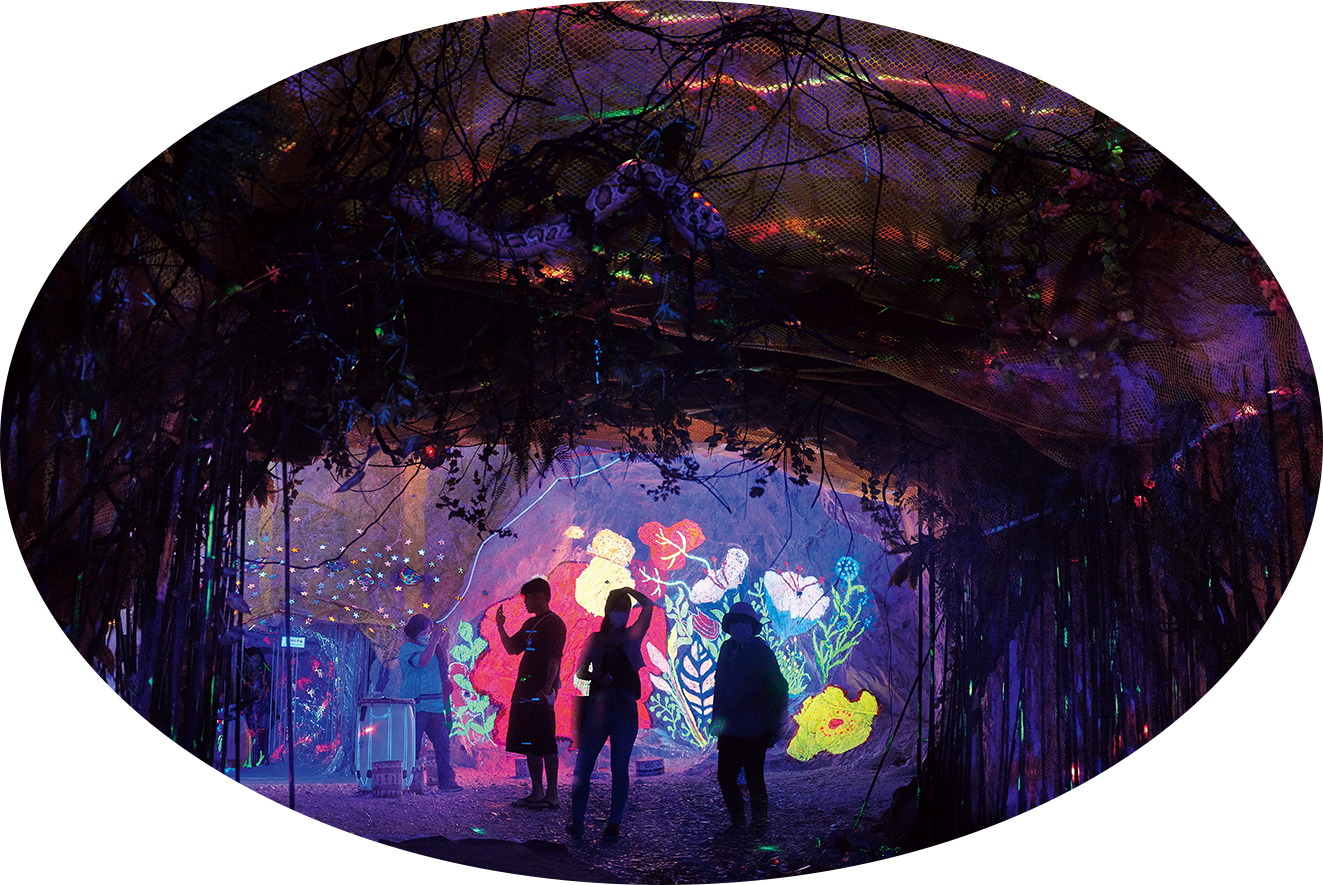
A Luminescent Mural Zone in Jade Cave is a popular photo spot.
The Possibilities of an Abandoned Mine
If you have been keeping up with Korean culture, you may have come across the expression “makjang (blind-end or dead-end) drama.” The term “makjang,” commonly used by Koreans, was a term that referred to “the dead-end in a coal mine or the end of a tunnel.”
Although coal mining impacted Korean society so heavily that coal mining terminologies were passed down to be used on a day-to-day basis, the coal mining industry eventually slid into decline as time went by. Naturally, many of the mines have been abandoned or are about to be. Nevertheless, there are many potential uses for historic spaces in danger of disappearing. Jade Cave demonstrates this potential.
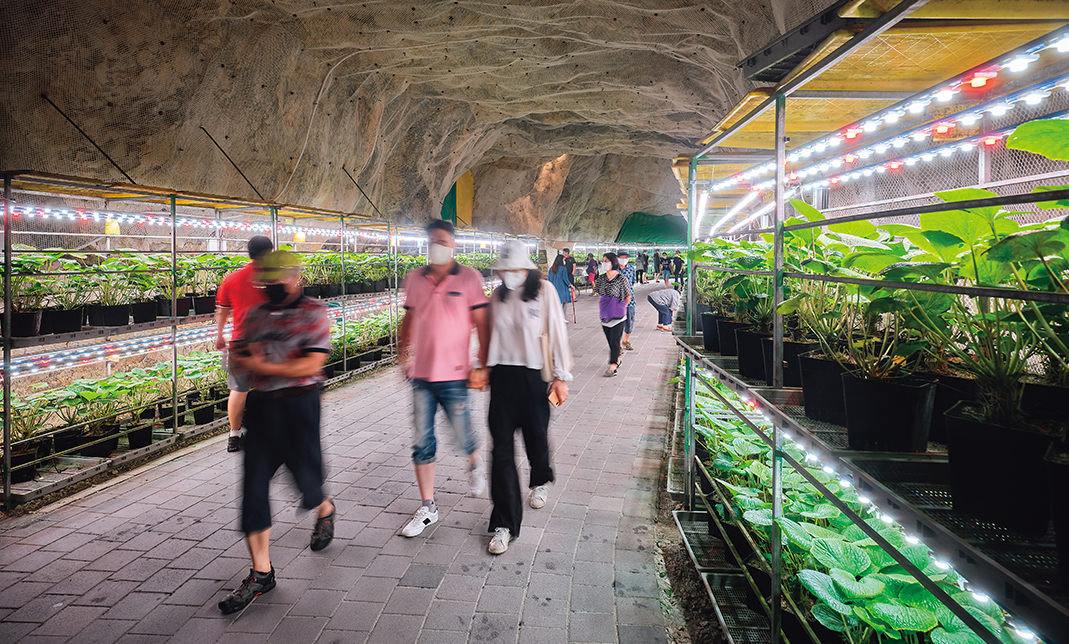
Water wasabi grows in a smart farm in Jade Cave.
Other Articles
-
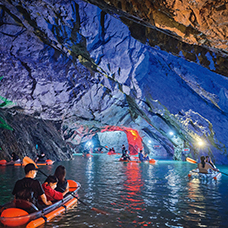
Special Ⅰ Man-made Caves Find New Life
-
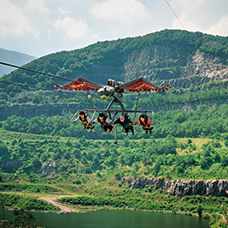
Special Ⅱ Returned to Nature
-

Trend Underground Dining
-

Hidden View The Highest Point
-
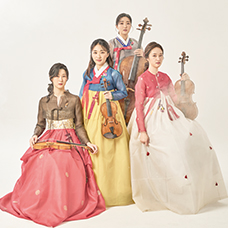
Interview Esmé Quartet
-
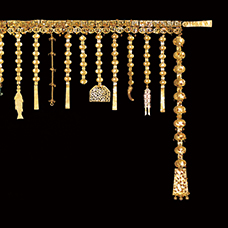
Art of Detail Heart of Gold
-
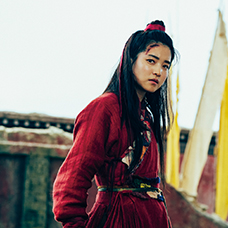
Film & TV Alienoid Part 1
-
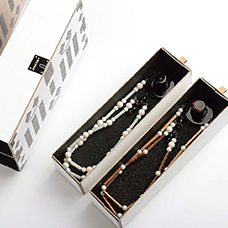
Collaboration Daily Life Embraces Korean Tradition
-

Current Korea South Korea’s Diplomatic Shift
-

Global Korea Encountering the Beauty of Hanbok at Oskemen

